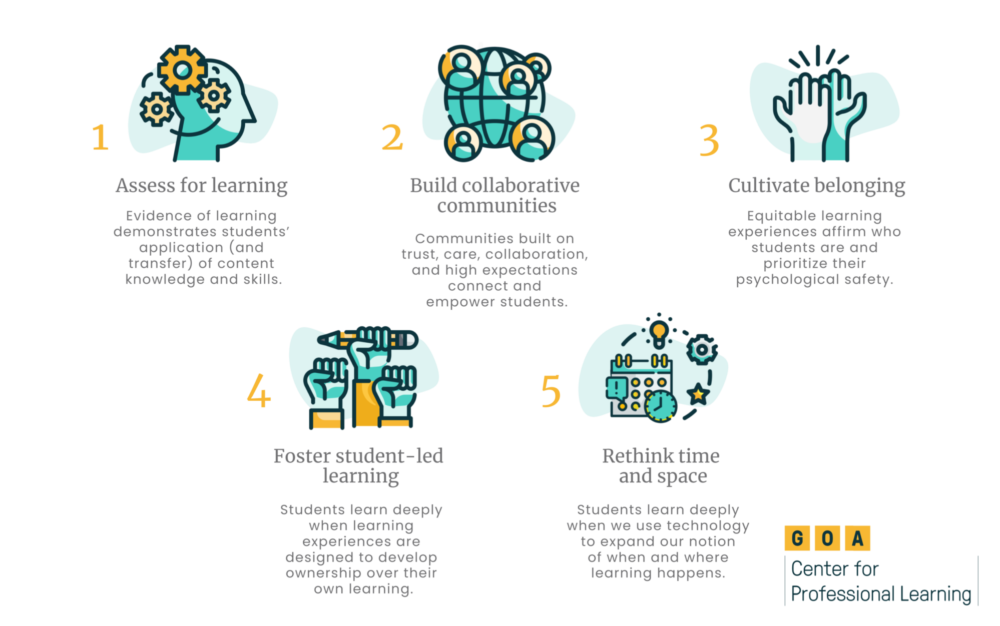The ABCs of AI in Education
As the world continues to evolve and technology permeates every aspect of our lives, the field of education is no exception. Artificial Intelligence (AI) is becoming an increasingly important tool in teaching and learning, providing new opportunities for educators and students alike. But what does AI mean for students, educators, and the learning experience as a whole? In this blog post, I’ll explore the ABCs of AI in education and how it’s changing the way we think about teaching and learning.
A is for AI
AI refers to the ability of machines to learn and make decisions based on data inputs. In education, AI is being used to analyze student data, personalize learning experiences, create lesson plans, offer students feedback, and even to create rubrics. Artificial Intelligence has the potential to revolutionize education by personalizing learning experiences, facilitating assessment, and providing feedback to both students and educators. By leveraging AI, teachers can better understand students' strengths and weaknesses, enabling them to deliver tailored instruction that caters to each individual's unique needs. Additionally, AI can help address educational disparities, as it empowers learners from diverse backgrounds with access to quality education and resources.
Whether it’s utilized to differentiate lessons for individual students, checking a student’s understanding of a topic, or serving as a brainstorming partner, AI’s ability to adapt content, pacing, and feedback to meet the needs of individual learners is incredible.
We asked GOA Faculty how they are using AI with students. Of those that responded, teachers reported that students are using AI tools for brainstorming and guidance rather than in final work products. For example, one teacher shared that students are using chatGPT to refine and sharpen their research questions for an IB class. Yet another teacher mentioned that faculty are using chatGPT to summarize survey results. If a teacher regularly surveys students, or utilizes surveys as an exit ticket in classrooms, chatGPT can help in identifying overarching themes in the results. These can then be shared back with students and used to help with planning subsequent lessons and materials that the students need.
Concerns about AI’s perpetuation of biases and untruths remains. It’s important for educators to be mindful of these issues. Much like these examples above suggest, approach AI as a tool that can enhance, rather than replace, human teaching and learning.
B is for Beautiful
As we integrate AI into education, it's crucial to consider the "beautiful" aspects of learning. This notion of beauty is inspired by the works of Ron Berger in his book, "An Ethic of Excellence," and Warren Berger's "A More Beautiful Question." Ron Berger emphasizes the importance of fostering a culture of craftsmanship in education, wherein students are encouraged to create work that reflects their best efforts. Warren Berger champions the power of asking "beautiful questions" that spark curiosity, creativity, and critical thinking.
To create beautiful learning experiences, teachers can encourage students to demonstrate their understanding of AI through projects that showcase their skills, creativity, and craftsmanship. By incorporating AI into these projects, students can explore new ways of problem-solving and deepen their understanding of complex concepts. This approach not only instills a sense of pride in their work but also helps them develop essential 21st-century skills, such as collaboration, communication, and critical thinking.
In the age of generative AI it is going to be imperative that we ask students to demonstrate their understanding of a subject, idea, concept, or area of study. One way we can do this is by looking at the types of questions they ask. While prompting is a requisite skill in how we use AI, it’s also how we demonstrate curiosity and is the first step on the path to learning.
C is for Competencies
At Global Online Academy (GOA), we believe that educators need to be prepared to design learning experiences that meet the needs of students in the age of AI. That’s why we’ve identified five educator competencies that are essential for teaching in a global, online environment that are transferable and adaptive to any learning environment.

GOA's Educator Competencies
These competencies include assessing for learning, building collaborative communities, cultivating belonging, fostering student-led learning, and rethinking time and place. By developing these competencies, educators can create learning experiences that are engaging, accessible, equitable, and effective in any environment and that are responsive to new technologies, including AI.
In the age of AI, it’s more important than ever for students to develop competencies that go beyond just content knowledge. They need to be able to collaborate, think critically, and communicate effectively. By designing learning experiences that support these competencies, educators can help students prepare for a rapidly changing world.
AI is transforming the world of education in exciting and challenging ways. As educators, it’s our responsibility to embrace these changes while also remaining mindful of the potential risks and limitations of AI. By focusing on beautiful work and questions, and developing the competencies needed to design effective learning experiences, we can create a future where AI supports human teaching and learning.
For more, see:
- Three Trends Propelling Education in 2023
- How AI Can Support Agency in Our Students, and in Us
- Why Student Artifacts of Excellence are More Important Than Ever
GOA serves students, teachers, and leaders and is comprised of member schools from around the world, including independent, international, charter, and public schools. Learn more about Becoming a Member. Our professional learning opportunities are open to any educator or school team. Follow us on LinkedIn and Twitter. To stay up to date on GOA learning opportunities, sign up for our newsletter.
